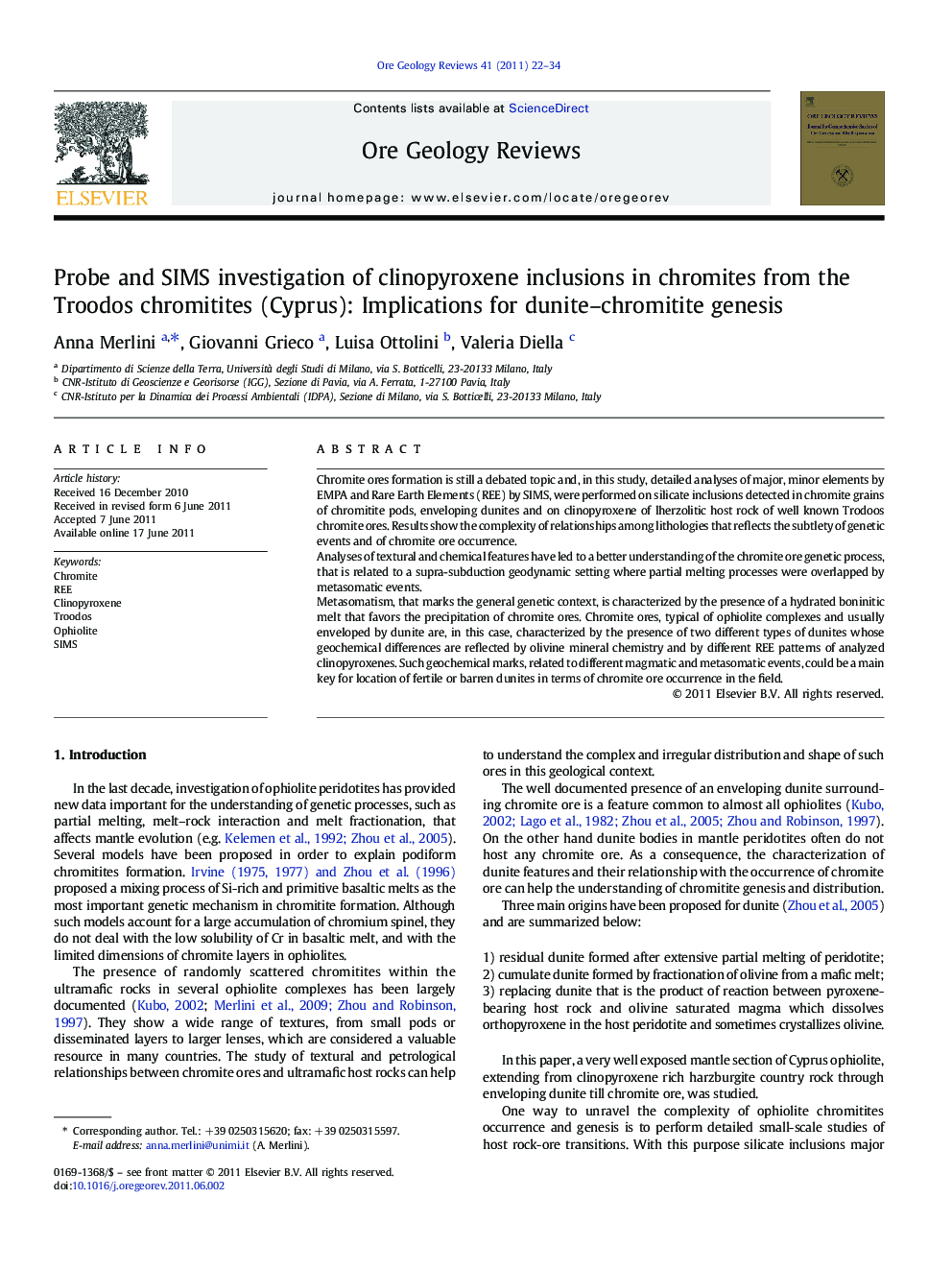| Article ID | Journal | Published Year | Pages | File Type |
|---|---|---|---|---|
| 4697688 | Ore Geology Reviews | 2011 | 13 Pages |
Chromite ores formation is still a debated topic and, in this study, detailed analyses of major, minor elements by EMPA and Rare Earth Elements (REE) by SIMS, were performed on silicate inclusions detected in chromite grains of chromitite pods, enveloping dunites and on clinopyroxene of lherzolitic host rock of well known Trodoos chromite ores. Results show the complexity of relationships among lithologies that reflects the subtlety of genetic events and of chromite ore occurrence.Analyses of textural and chemical features have led to a better understanding of the chromite ore genetic process, that is related to a supra-subduction geodynamic setting where partial melting processes were overlapped by metasomatic events.Metasomatism, that marks the general genetic context, is characterized by the presence of a hydrated boninitic melt that favors the precipitation of chromite ores. Chromite ores, typical of ophiolite complexes and usually enveloped by dunite are, in this case, characterized by the presence of two different types of dunites whose geochemical differences are reflected by olivine mineral chemistry and by different REE patterns of analyzed clinopyroxenes. Such geochemical marks, related to different magmatic and metasomatic events, could be a main key for location of fertile or barren dunites in terms of chromite ore occurrence in the field.
► In this study we propose a genetic model for podiform chromite ores of Troodos ophiolite complex. ► We performed detailed analyses of major, minor elements by EMPA and Rare Earth Elements (REE) by SIMS. ► We conclude that Chromite ores are characterized by the presence of two different types of enveloping dunites. ► Geochemical differences could be a main key for location of fertile or barren dunites in terms of chromite ore occurrence in the field.
